Winter can be one of the most challenging seasons for gardeners and plant enthusiasts. As temperatures drop, frost becomes a significant concern, especially for tender plants, flowers, and vegetables. Frost can damage leaves, weaken roots, and even kill entire plants if left unchecked. However, with the right strategies, you can safeguard your garden and ensure your plants remain healthy throughout the cold season.
This guide will provide practical, easy-to-follow methods on how to protect plants from frost during winter, while also explaining why frost occurs, which plants are most vulnerable, and how to prepare your garden in advance.
Understanding Frost and Its Impact on Plants
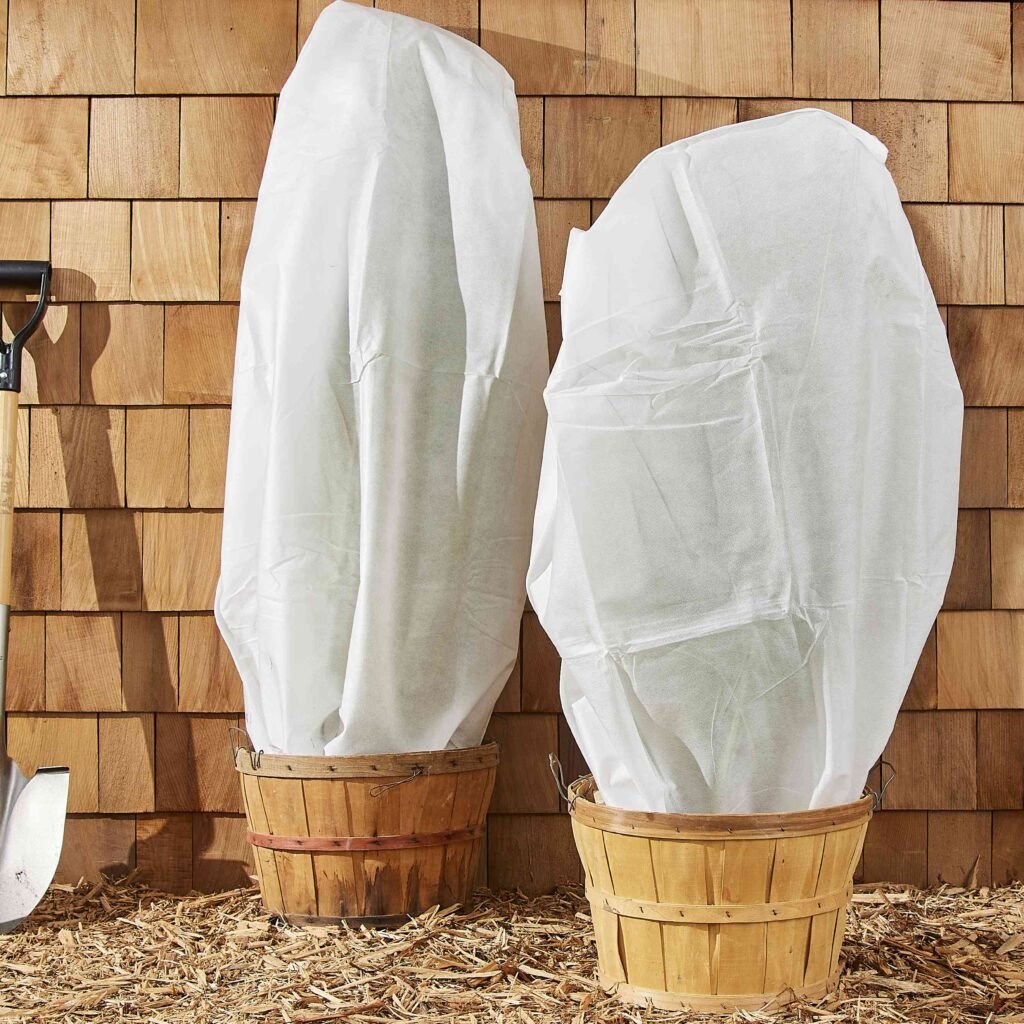
Frost occurs when the temperature near the ground drops to 0°C (32°F) or lower, causing water vapor in the air to freeze and form ice crystals. These crystals can settle on leaves, stems, and buds, drawing moisture out of the plant tissues and causing cell damage.
Types of Frost:
- Hoarfrost – A light, white frost forming on plant surfaces.
- Black Frost – A more damaging frost where ice forms inside plant tissues, turning leaves dark or black.
- Radiation Frost – Occurs on clear nights when heat escapes quickly from the soil.
Plants Most at Risk:
- Tender annuals like tomatoes, peppers, and basil.
- Tropical or subtropical houseplants.
- Young seedlings and new transplants.
- Budding fruit trees or flowering shrubs in late winter/early spring.
Knowing which plants are vulnerable helps you prioritize protection.
Signs of Frost Damage
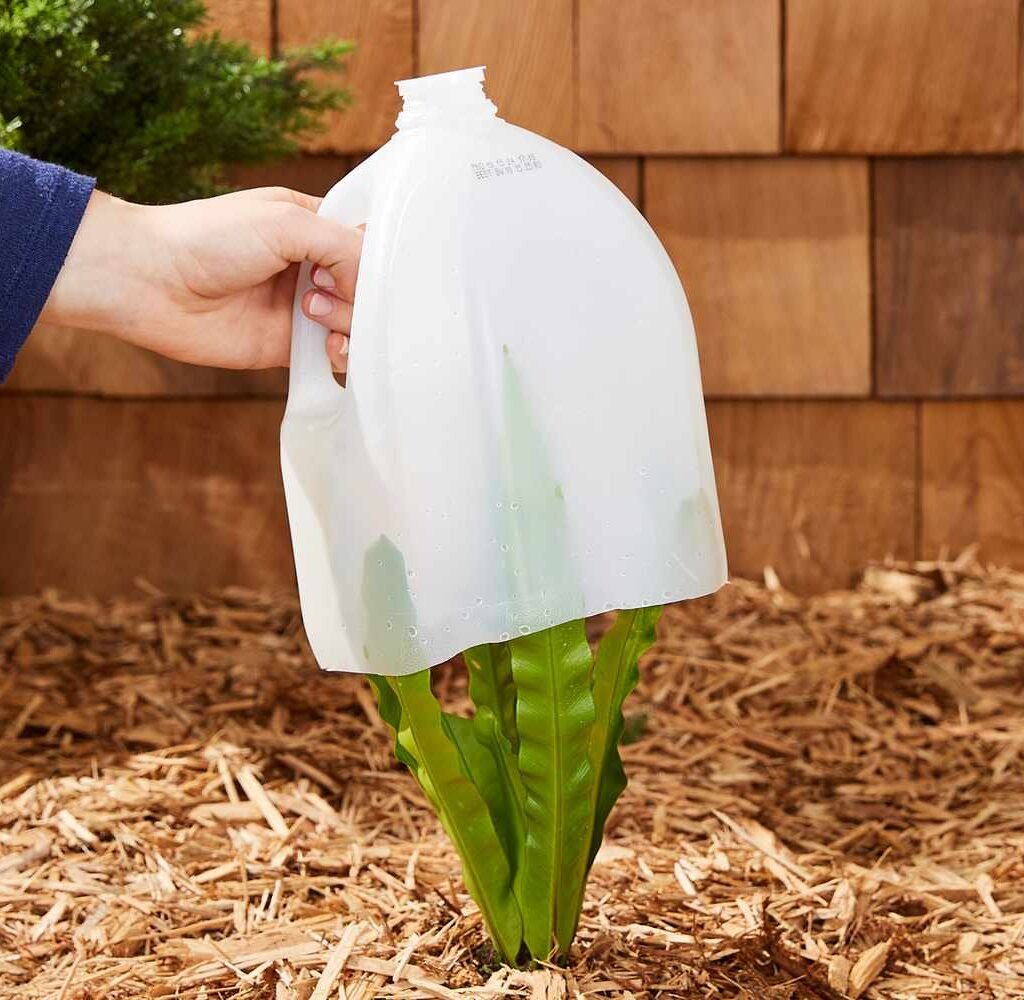
Before discussing prevention, it’s important to recognize the symptoms of frost injury:
- Leaves appear wilted, soggy, or blackened.
- Stems become soft and weak.
- Buds may shrivel and fail to bloom.
- Growth slows down significantly.
If frost damage is mild, some plants may recover, but severe cases often require pruning or replanting.
Effective Ways to Protect Plants from Frost
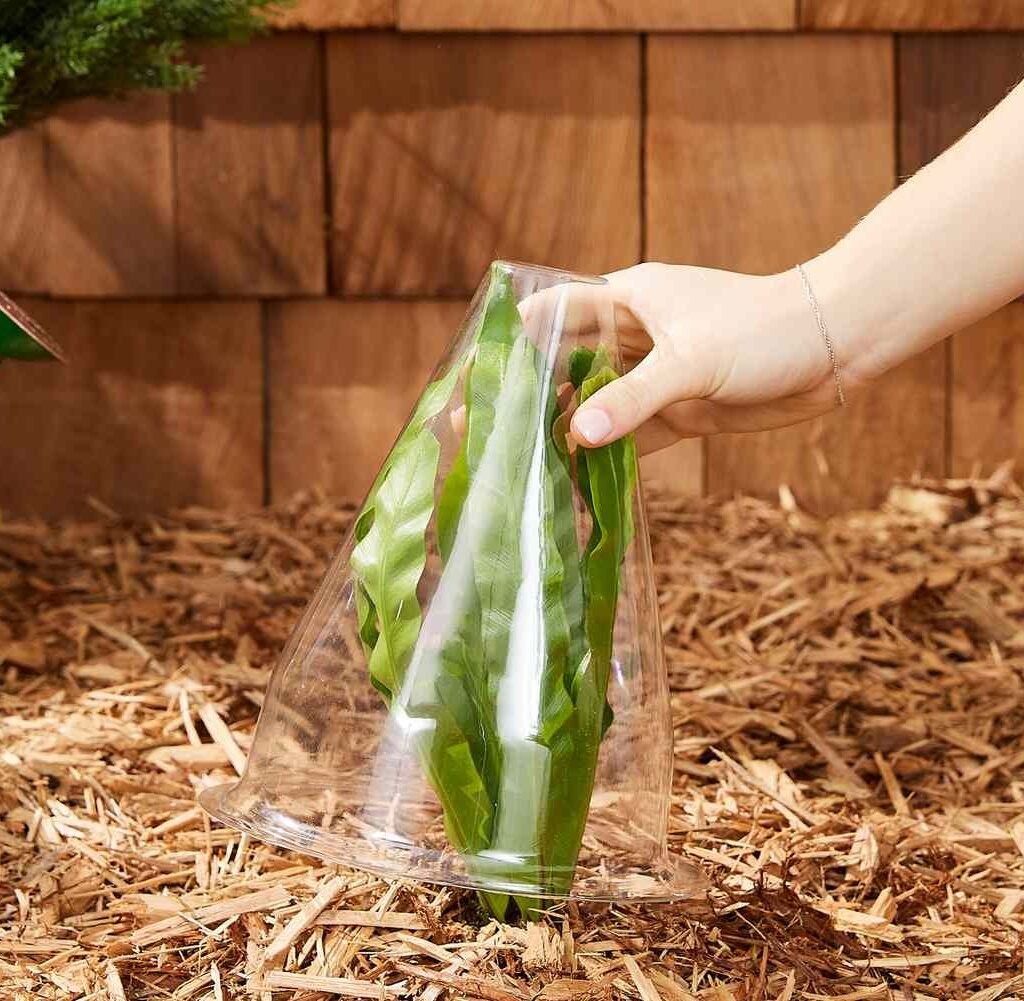
1. Cover Plants with Protective Materials
Covering plants is one of the most effective and easiest ways to shield them from frost.
- Use frost cloths, old sheets, blankets, or burlap to trap warmth.
- Avoid using plastic directly on plants, as it can trap moisture and cause freezing damage.
- Anchor covers securely so they don’t blow away in the wind.
- Remove covers in the morning to allow sunlight and airflow.
This method works best for garden beds, shrubs, and small trees.
2. Water Plants Before a Frost
Moist soil retains heat better than dry soil. By watering your plants during the day before a frost is expected, you help the ground release heat slowly overnight. However, avoid overwatering, as soggy soil can harm roots in winter.
3. Mulching to Insulate Roots
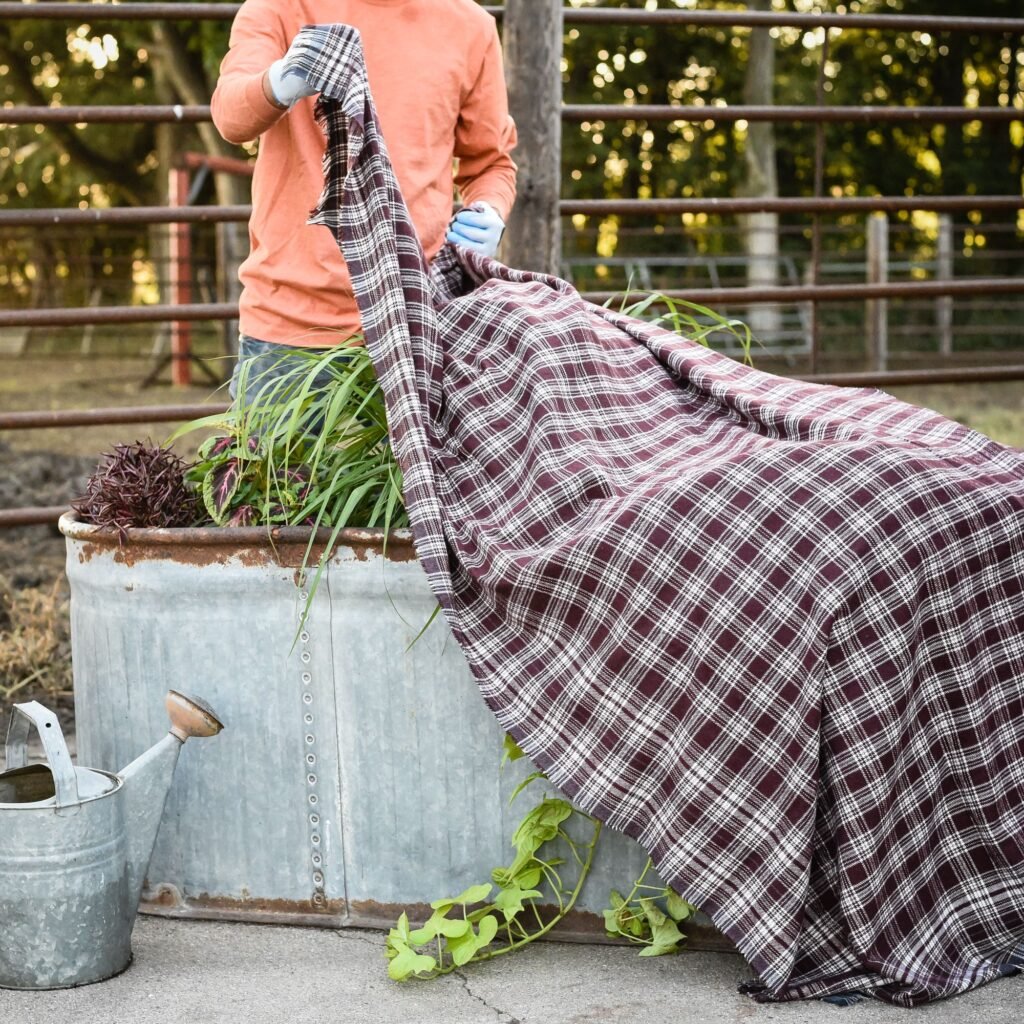
Adding a thick layer of mulch around the base of plants protects the root zone from freezing temperatures.
- Use organic mulches like straw, shredded leaves, wood chips, or compost.
- Apply 2–4 inches of mulch, but keep it a few inches away from the plant stem to avoid rot.
- Mulching is especially useful for perennials and shrubs that can regrow from roots in spring.
4. Bring Potted Plants Indoors
If you have container plants, move them indoors or into a greenhouse during frosty nights.
- Place them near windows for sunlight or under grow lights.
- Group plants together to create a microclimate of shared warmth.
- For plants that must remain outdoors, wrap pots with insulating materials like bubble wrap or burlap to protect the roots.
5. Use Cold Frames or Cloches
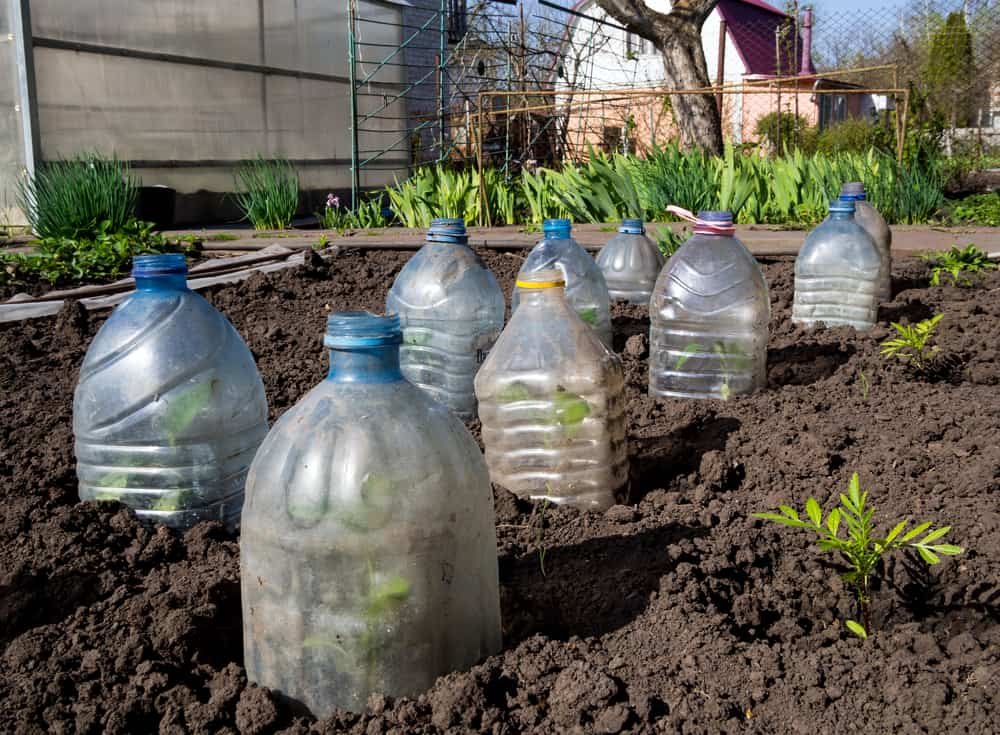
Cold frames and cloches act like mini-greenhouses, capturing solar heat and shielding plants from frost.
- A cold frame is a wooden or metal box with a transparent lid (glass or plastic) placed over garden beds.
- A cloche is a bell-shaped cover made of glass, plastic, or even an upturned jar, used to cover individual plants.
Both options are great for extending the growing season of vegetables like lettuce, spinach, and herbs.
6. Create Windbreaks
Wind intensifies frost damage by carrying away heat from plants.
- Use temporary barriers such as wooden boards, fences, or burlap screens to shield plants from cold winds.
- Planting evergreen shrubs or hedges can also serve as long-term natural windbreaks.
7. Apply Row Covers or Tunnels
Row covers are lightweight fabrics that can be draped directly over plants or supported with hoops to form tunnels.
- They trap heat, reduce frost exposure, and allow water and light penetration.
- Ideal for protecting vegetable beds during winter or early spring frosts.
8. Heating Solutions for Gardens
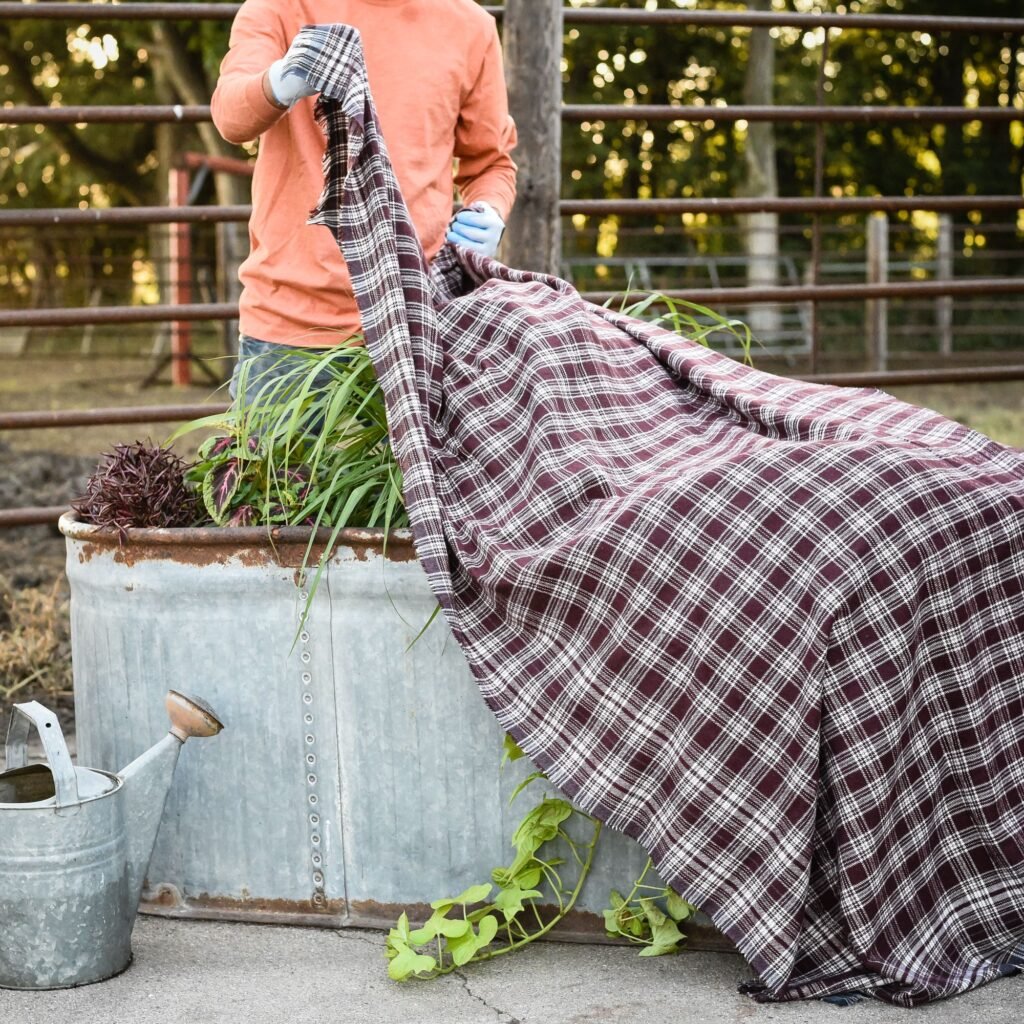
For gardeners who experience severe frosts, artificial heating can help:
- Christmas lights (non-LED) wrapped around shrubs or trees emit gentle heat.
- Heat lamps or small portable heaters in greenhouses maintain a stable temperature.
- Always ensure safety by avoiding flammable materials and monitoring heat sources.
9. Pruning and Timing
Avoid pruning plants late in the fall, as this encourages new, tender growth that is highly susceptible to frost. Instead, wait until late winter or spring to prune frost-damaged parts.
10. Choose Cold-Hardy Varieties
When planning your garden, select plants known for cold tolerance. Some vegetables like kale, cabbage, and Brussels sprouts can withstand frost and even taste sweeter after exposure. Cold-hardy perennials and native species are also more resilient.
Long-Term Strategies for Frost Protection
- Greenhouses and Polytunnels – Provide year-round frost protection for sensitive plants.
- Raised Beds – Warm up faster than ground soil and can be insulated.
- Succession Planting – Staggering planting times reduces the risk of losing all crops to unexpected frost.
- Weather Monitoring – Stay updated on local frost forecasts and prepare covers or protection in advance.
What to Do If Plants Are Damaged by Frost
Despite your best efforts, some frost damage may occur. Here’s how to help plants recover:
- Don’t prune immediately – Wait until warmer weather to see which parts survive.
- Water lightly – Help plants rehydrate but avoid waterlogging.
- Add compost or fertilizer – Support recovery with nutrients once new growth appears.
- Protect from further frost – Repeat preventive measures for future cold nights.
Conclusion
Protecting plants from frost during winter may seem challenging, but with proper planning and a few simple techniques, you can minimize damage and keep your garden thriving. From using covers and mulch to creating windbreaks and installing cold frames, these strategies help safeguard vulnerable plants while promoting resilience in the long term.
Remember: prevention is always better than cure. By taking proactive steps before frost strikes, you ensure that your plants not only survive winter but emerge stronger and healthier in spring.
Your garden doesn’t have to go dormant in winter—with the right care, it can stay alive, colorful, and full of promise for the seasons ahead.
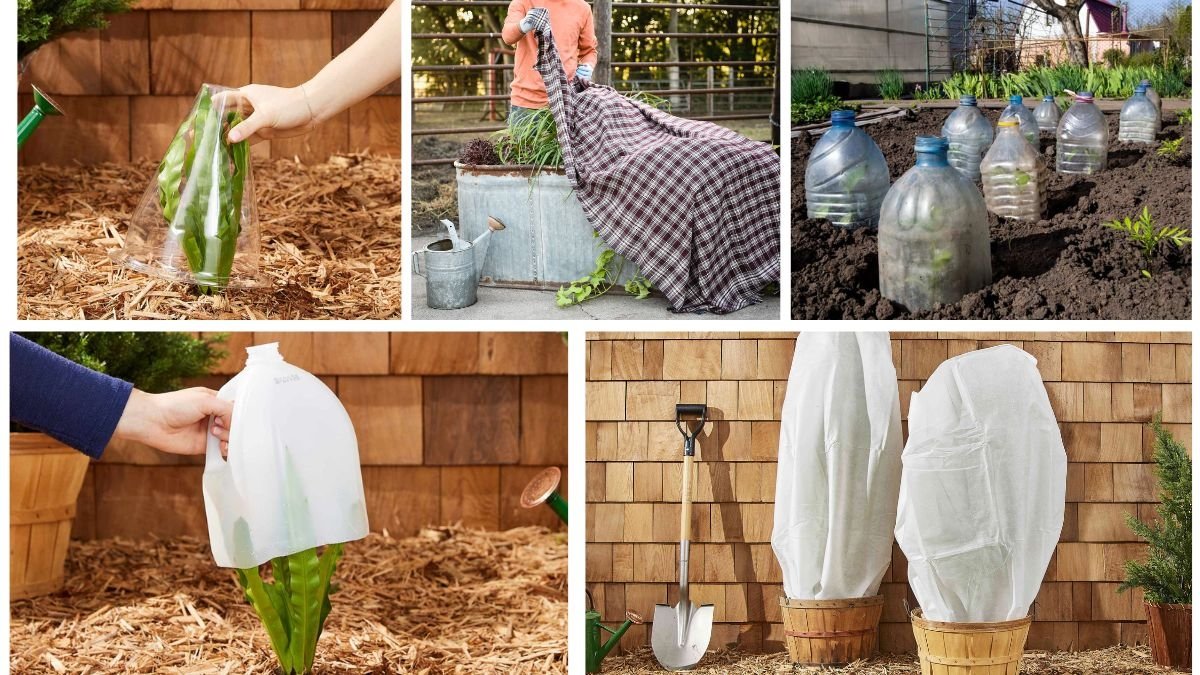





Leave A Comment